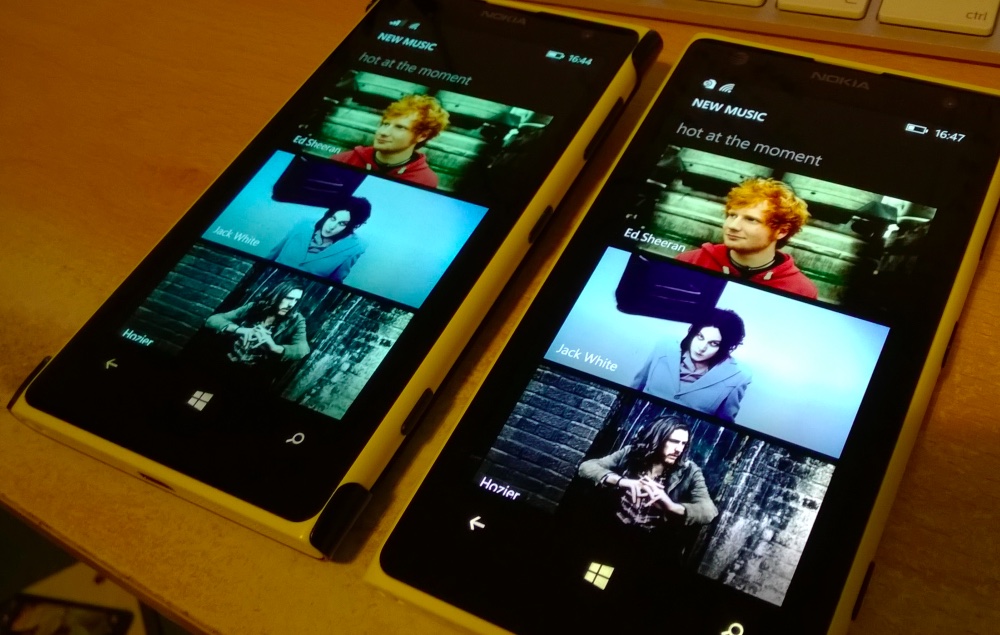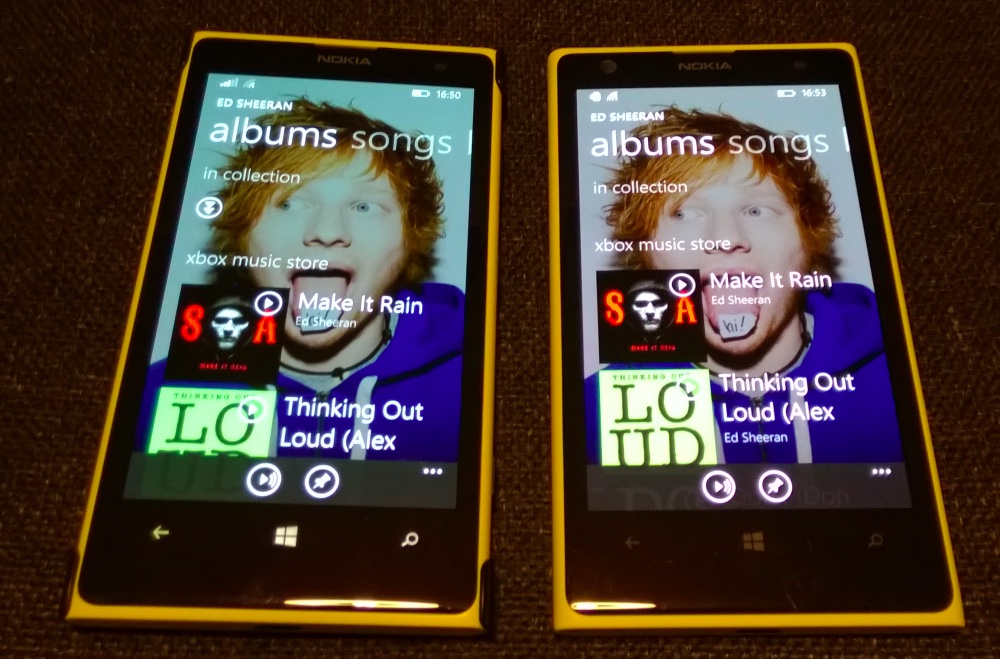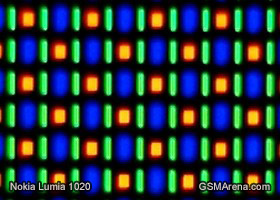Firstly, a summary of the technology, from my earlier article:
| 2014 evaluation |
AMOLED (e.g. Lumia 1020, 735) | LCD (e.g. Lumia 1520, 830) |
| Pros |
|
|
| Cons |
|
|
I then went on in the original piece to demonstrate that colours and detail are now better for top end LCD screens. But what about longevity?
The 'degradation' mentioned above is due to the way the individual red, blue and green sub-pixels gradually lose their efficiency (and thus brightness) over time, with use. Leaving aside, just for a moment, that most AMOLED screens have these sub-pixels in a 'pentile' layout (with twice as many greeen pixels as red and blue, to try and even out the colours rendered to the human eye), it's a known fact that blue pixels age much faster than red and green.
In shop displays, i.e. on demo units, with AMOLED screens forced on for hour after hour, genuine 'burn-in' has been observed. Actually, what is seen here is that parts of the display which have been on for a long time and on brightly have parts which don't shine as brightly as they once did. So when asked to display a block of solid colour, lines, spots and characters can be seen 'etched' into the block, i.e. not as bright as the surrounding pixels.
In normal use, of course, and especially with Windows Phone 'Brightness' set as 'Automatic', it's hard to detect any degradation over the normal lifetime of a smartphone, e.g. a couple of years. But what I wanted to test was if I could detect such a worsening, either in brightness or colouration.
Happily, I happen to have ended up with two Lumia 1020s - one is the workhorse that I've used almost every day for eighteen months, while the other is an AT&T model that doesn't work on UK frequencies and so had hardly been used at all - just the odd test here and there. So, why not try looking at the same screens of content on both the 'old' 1020 and the 'as new' 1020? Would I be able to tell any difference?
Helping me were my family, who each voted on which screen looked clearer and crisper, without being told of the reason for the test or what they should be looking for. Each phone was set up with the same app, the same content and the same 'Automatic' brightness setting. Minor concerns were that the 'old' 1020 was on the Developer Preview programme and thus had a slightly newer version of the OS.

There was a slight balance issue, in terms of colour, the newer 1020 screen seemed less red/yellow and more neutral, though overall brightness seemed about the same.
With the tendency for blue subpixels in AMOLED screens to degrade fastest, the 'shift to yellow' is indeed what I'd expect to see from an older/aging screen.
But it's hard to judge just from from one angle, one photo above, so I tried different content and from different angles/lighting:

The shot above makes it pretty plain too, with there being a very definite change in skin colour on Mr Sheeran.
Moreover, I noticed that the newer 1020 screen seemed crisper too - surely this wasn't possible, since both had exactly the same resolution? What I think is happening is that, with the blue sub-pixels being down in brightness, the very pentile nature of the 1020's screen (and remember the same will be true for devices like the 925) means that a lot of the detail is being handled by the alternating red and blue sub-pixels, effectively edging the smartphone screen down from 768p to a very humble 384p.

From gsmarena here, a photo up really close of the 1020's linear pentile arrangement....
Another example from my pair of 1020's:

Again, you can see the slightly tainted white for the BBC's web site background on the older 1020 display, plus the rendered text isn't quite as crisp, either in these photos or to my naked eye.
My unbiased family members were shown the live devices each time and all declared the newer display to be 'better', meaning more natural colours and better definition, so it's not just me - or you, having seen the photos above.
Conclusions
Of course, putting all of this into context, it has taken some pretty heavy duty life to get the older Lumia 1020 into this state, plus I still had to go to extraordinary lengths, bringing in a direct comparison device, in order to convince myself of the degradation, and that I wasn't just imagining it. A normal user of a 1020 or 925 (or 735) will likely not notice any issues at all throughout the normal life cycle of the device.
But, as concluded (reluctantly, as an AMOLED fan) in my earlier article, maybe LCD really is a better choice these days? It certainly seems to be so in terms of keeping a smartphone display at peak performance over a timescale measured in years.
PS. One obvious question for Lumia 1020/925 owners is what can be done to extend the performance of their displays. Keeping brightness on 'Automatic' and not 'Maximum' is a good start. Using dark themed apps and content where possible helps even more.
PPS. LCD screens rely on a LED 'backlight', of course, and these also dim in time - but anecdotal evidence is that this dimming is measured in terms of many years (perhaps even a decade) of normal use, so the effect is unlikely to ever be seen within the lifetime of the rest of the device.
